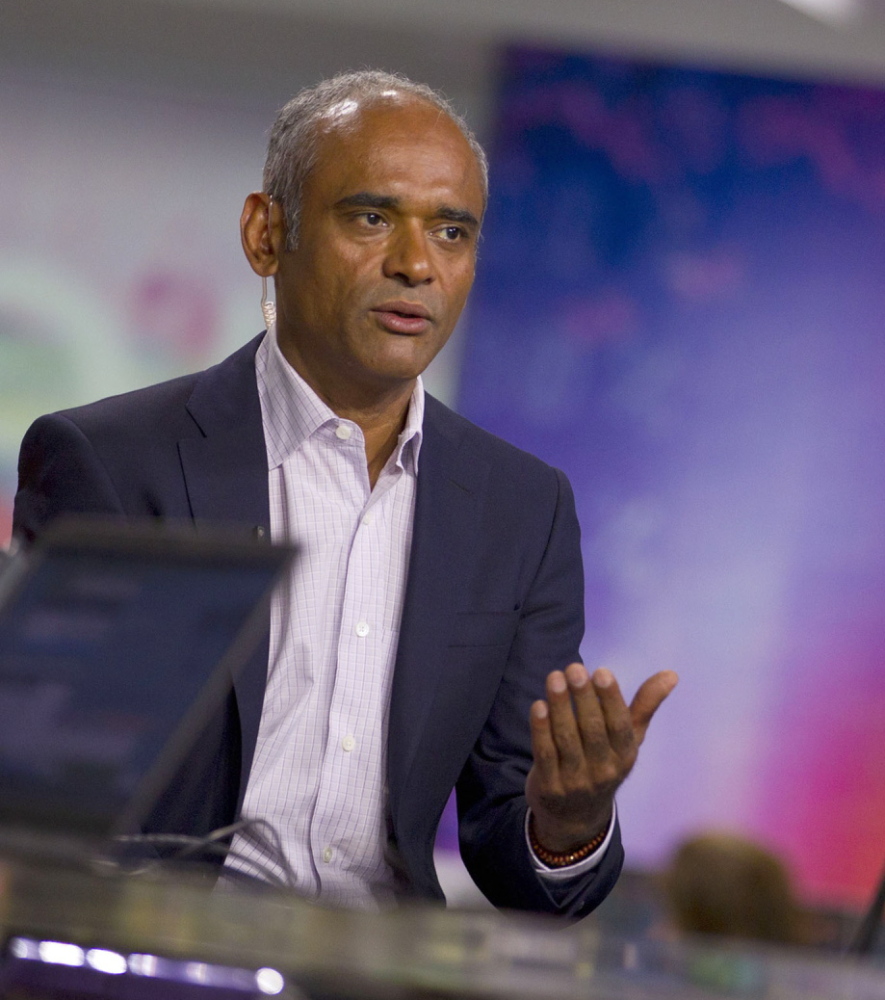WASHINGTON — An Internet startup is roiling the television industry with an old-school technology: The antenna.
The start-up, Aereo, uses thousands of tiny antennas to capture broadcast television programs, then converts the shows into online video streams for subscribers in 11 cities.
What Aereo doesn’t do is pay licensing fees to the broadcast networks that produce the programs. And that has put Aereo at the center of a fierce debate over the reach of copyright laws, the accessibility of public airwaves and the future of television.
This week, the Supreme Court will hear arguments in a civil case filed against the 2-year-old private firm by ABC, CBS, NBC and other major broadcasters alleging that Aereo is no different from cable and satellite firms that are required to pay hefty fees to rebroadcast their shows.
“Quite simply, Aereo takes copyrighted material, profits from it and does so without compensating copyright holders,” said Gordon Smith, the president of the National Association of Broadcasters.
But Aereo argues that it is entitled to draw freely from programs transmitted on public airwaves – an argument that, if successful, has the potential to blow apart the expensive channel bundles that have been forced on American households and radically reduce the cost of watching television.
“Aereo has a shot at changing the TV business model,” said Gene Kimmelman, president of Public Knowledge and a former antitrust official at the Justice Department. “Behind the technical and legal arguments of the case is a fundamental question of whether consumers will be able to take advantage of new technology to access programming in a convenient and low-cost fashion.”
An Aereo victory could dramatically change the way people watch their favorite programs. Live sports and other popular shows that are only available on broadcast TV or cable television could be accessed more conveniently and cheaply over the Internet. That could lead many consumers to cut the cable cord in favor of a much cheaper alternative: a broadband Internet connection and subscriptions to Aereo and Netflix. The average price of basic cable is nearly $100 a month. Broadband Internet plus subscriptions to Aereo and Netflix is less than $60.
As legal teams for both sides prepare to make their arguments before the court Tuesday, analysts say it’s unclear which side will prevail. At the heart of the case is the question of whether Aereo violates a four-decades-old copyright law written during the birth of cable television.
That law prohibits the use of copyrighted material broadcast over public airwaves without the approval – and compensation – of its owner. But the law distinguishes between material used for “public” performances, shown to multiple people at once, and “private” performances, shown to a single individual.
Aereo argues that it is no more than an antenna rental service. Its customers pick the shows they want to watch and Aereo assigns them an antenna and positions it to capture the desired show from local airwaves. The shows are then transformed into digital streaming video for viewing on tablets, smartphones and laptops. That makes Aereo merely a mediator of “private” performances, the company argues, because each antenna rebroadcasts a show to just one subscriber.
“Consumers have the legal ability to access the public airwaves and they have the right to have their own antennas, which is what we are supplying,” said Aereo chief executive Chet Kanojia.
Subscribers still see the advertisements, Kanojia argued, so the company is not denying the networks their main source of revenue.
“Broadcasters can’t double dip,” he said. “They had the same complaints when the VCR came. The sky didn’t fall then, and in fact a huge business around VCRs and DVRs bloomed from that technology. The same will happen with our technology and the sky won’t fall on broadcasters today, either.”
Send questions/comments to the editors.



Success. Please wait for the page to reload. If the page does not reload within 5 seconds, please refresh the page.
Enter your email and password to access comments.
Hi, to comment on stories you must . This profile is in addition to your subscription and website login.
Already have a commenting profile? .
Invalid username/password.
Please check your email to confirm and complete your registration.
Only subscribers are eligible to post comments. Please subscribe or login first for digital access. Here’s why.
Use the form below to reset your password. When you've submitted your account email, we will send an email with a reset code.